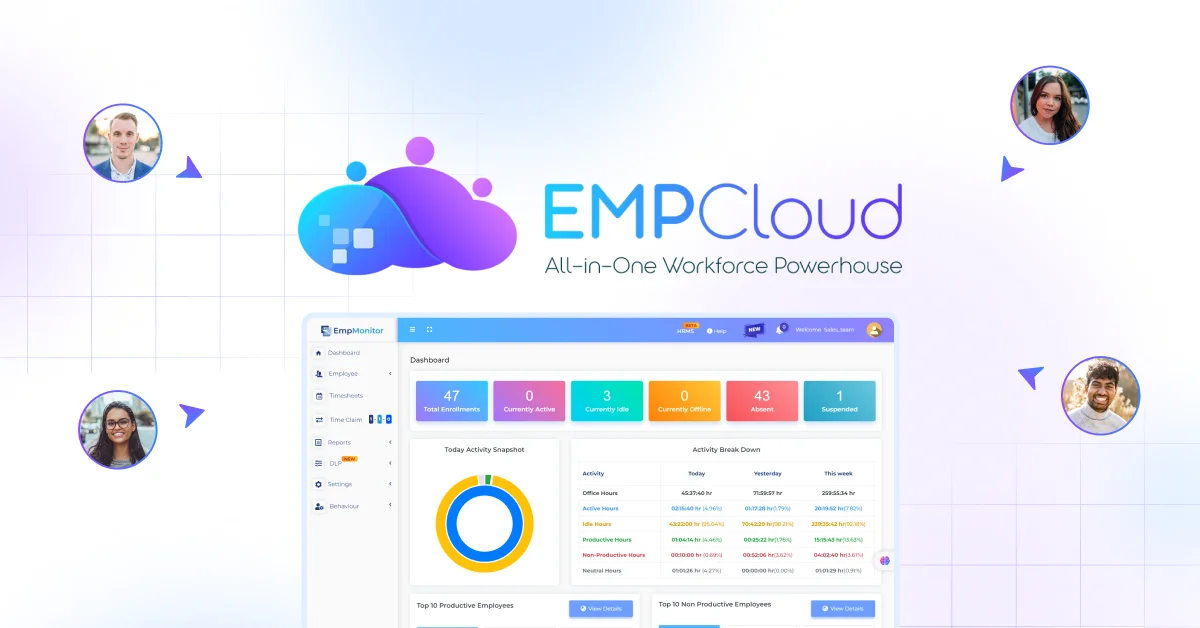
Numbers can tell you a lot about how your company is managing money and where it’s going. Since management should know how much effort it would take them to work on a project. When it comes to project management statistics, we’re not just talking about boring spreadsheets and pie charts. We’re talking about real money, real deadlines, and real consequences for your business.
Every project you start is basically a bet you’re making with company resources. And if you don’t have solid data to back up your decisions, you might as well be throwing darts blindfolded.
Here’s what most business owners don’t realize: the companies crushing it in their industries aren’t necessarily smarter or more creative than everyone else. They’re just better at using project management statistics to figure out what’s working and what’s burning cash.
Think about it, if you knew exactly where projects typically go off the rails, wouldn’t you do everything possible to avoid those pitfalls? That’s exactly what data-driven companies are doing, and it’s why they’re consistently outperforming their competitors.
In a hurry? Listen to the blog instead!
Why Poor Project Management Is Costing You More Than You Think?
Here’s a wake-up call: for every billion dollars companies invest in projects, about $122 million gets completely wasted. Just gone. That’s not a typo; it’s the harsh reality of poor project management.
And before you think, “Well, that’s just big corporations with money to burn,” consider this: that same 12% waste rate probably applies to your projects too, whether you’re spending $10,000 or $10 million.
What Is Project Tracking? It’s the simple but crucial discipline of keeping a close eye on tasks, progress, budgets, and deadlines so things don’t spiral out of control—and these numbers make it clear why it matters.
Project management statistics paint a sobering picture of how much money disappears due to preventable mistakes. The really scary part? Only 35% of projects actually succeed in the way they’re supposed to.
That means delivering on time, staying within budget, and actually accomplishing what they set out to do. The other 65% either crash and burn completely or limp across the finish line so beaten up that nobody’s really happy with the results.
Project management statistics like these should make every CEO sit up and pay attention because they reveal the true cost of inefficiency. But it’s not just about the money that disappears from your bank account.
Failed projects kill team morale faster than anything else. You know that feeling when a project goes south, everyone’s stressed, people start pointing fingers, and suddenly your best employees are updating their LinkedIn profiles.
Client relationships get strained, sometimes beyond repair. Your company’s reputation takes hits that can take years to recover from. According to project management statistics, companies with high project failure rates experience 40% higher employee turnover than those with consistent success.
Breaking Down Where Your Money Actually Goes:
About 45% of all projects blow past their budgets, and we’re not talking about going over by a few bucks. The average cost overrun is 27% above what was originally planned. So if you budgeted $100,000, you’re realistically looking at spending $127,000.
Now, multiply that across all your projects for the year, and you start seeing why companies struggle financially even when they’re “busy.”
Time delays are another massive drain on resources. Project management statistics show that 60% of projects miss their deadlines, typically running 10-15% longer than planned.
And time really is money, not just because you’re paying people longer than expected, but because delayed launches mean delayed revenue. You’re also tying up resources that could be making money on other projects.
Then there’s scope creep, which affects about 52% of projects. This is that sneaky thing where “just one small addition” turns into a monster that devours your timeline and budget. It usually starts innocently enough; a client wants one extra feature, or someone internally suggests an “improvement” that seems minor.
Before you know it, you’re working on a completely different project than what you scoped out, but you’re still stuck with the original budget and timeline.
What Happens When You Get Project Management Right:
When organizations nail their project execution, the results are pretty incredible. Companies with solid project management practices waste 28 times less money than those winging it. Let that sink in for a second.
Twenty-eight times less waste. That’s not just a better outcome, that’s a completely different business reality. Project management statistics reveal that this efficiency gap has widened by 15% over the past five years as best practices continue to evolve.
Investing in proper training pays off big time too. The average return is 7:1, meaning every dollar you spend training your team comes back as seven dollars in improved project outcomes.
That’s better ROI than most marketing campaigns, yet somehow training budgets always get cut first when money gets tight. Project management statistics show that organizations maintaining consistent training programs achieve 42% higher client satisfaction scores than those with sporadic or no training.
Here’s where it gets really interesting: high-performing organizations complete 89% of their projects successfully. Compare that to the 36% success rate of low performers, and you’re looking at the difference between a thriving business and one constantly firefighting.
Project management statistics don’t just predict success, they practically guarantee it when you pay attention and act on them. These data points become your roadmap to profitability.
The Numbers You Should Actually Care About:
Not all metrics matter equally, so let’s focus on the ones that directly impact your bottom line. Your project success rate is the big one, the percentage of projects that actually deliver what they promised.
If this number is low, everything else is just window dressing. Track it monthly, investigate drops immediately, and celebrate when it climbs.
Resource utilization is another critical number. You want your team working at around 75-85% capacity. Any higher and people burn out fast. Any lower and you’re probably overstaffed or not allocating work effectively.
Project management statistics confirm that companies maintaining this sweet spot see 23% higher profitability than those at either extreme. Budget variance tells you how good you are at estimating and controlling costs.
Some variance is normal, stuff happens. But if you’re consistently off by more than 5%, you’ve got systemic problems that need fixing. Maybe your estimates are too optimistic, or maybe you’re terrible at saying no to scope changes. Either way, this number will tell you.
The schedule performance index compares where you should be versus where you actually are on the timeline. A score of 1.0 means you’re right on track. Below 0.95 and you’re in trouble. Project management statistics prove that keeping this above 0.95 strongly predicts overall project success and happy stakeholders.
Why Project Management Software Isn’t Optional But Must?
Adding another software subscription feels like just another expense. But here’s the reality: 77% of successful projects use dedicated tools, while only 44% of failing projects do. That’s not correlation, that’s causation. Project management statistics consistently demonstrate that the right tools literally make the difference between success and failure.
Project management software statistics reveal something even more compelling: organizations using these tools report 28% fewer project failures and 38% better results in hitting their goals.
The software doesn’t just make things easier, it fundamentally changes outcomes. You get real-time visibility into what’s happening, which means you can fix problems before they explode into crises.
Project management statistics from thousands of organizations prove that real-time dashboards reduce crisis management by 55%. Think about all the time your team wastes tracking down information, sending status update emails, and trying to figure out who’s supposed to be doing what. Good software eliminates that noise.
It creates one place where everyone can see the truth about project health. Project management statistics show that centralized visibility alone reduces miscommunication by up to 40%. No more “I didn’t know” excuses, no more surprises in status meetings, no more wondering if you’re about to miss a deadline.
What Different Industries Are Experiencing?
Different types of businesses face different project challenges, and understanding your industry’s benchmarks helps you know if you’re winning or losing. Project management industry statistics show that IT projects are particularly brutal, with only 31% considered successful.
Technology moves fast, requirements change constantly, and integrating different systems is way harder than it looks on paper. Construction does better, about 64% of projects finish successfully, though cost overruns remain a constant headache.
At least with construction, you can see progress with your own eyes, which makes it easier to spot problems early. But weather, supply chain issues, and regulatory surprises still wreak havoc on budgets and timelines.
Marketing and creative projects land somewhere in the middle at 58% success rates. The biggest killer here is scope creep because creative work is subjective. When is a design “done”? When has copy been revised enough?
Without clear boundaries, these projects can stretch forever. Project management statistics highlight that agencies with defined revision limits achieve 35% better outcomes.
The People Side of Project Success:
Here’s something that gets overlooked in all the talk about processes and software: people still make or break projects. Teams with certified project managers are 38% more likely to finish projects successfully than teams without that formal training.
Certification isn’t just letters after someone’s name, it represents proven knowledge that translates to better decisions under pressure. Communication quality matters more than most people think.
Project management statistics reveal that projects with daily check-ins experience 47% fewer problems than those where the team only talks weekly. That doesn’t mean you need hour-long meetings every day. Even a 15-minute standup where everyone shares progress and blockers can prevent small issues from becoming disasters.
Executive sponsorship makes a huge difference too. Project management stats show that projects with actively engaged senior leaders are 75% more likely to succeed. That sponsorship provides political cover when tough decisions need to be made, ensures resources stay allocated, and signals to everyone that the project actually matters to the organization.
Also Read:
How EmpCloud Transforms Your Project Outcomes?
Talking about data is one thing, actually capturing and using it effectively is another challenge entirely. That’s where EmpCloud changes the game for organizations serious about improving their bottom line through better project execution.
EmpCloud is an all-in-one workforce management solution that also provides you with a project management solution. Instead of manually building reports from five different sources, you get real-time dashboards showing budget status, timeline progress, resource allocation, and risk indicators. This means you’re managing proactively instead of constantly reacting to fires.
The resource management features solve one of the trickiest problems, making sure people are working on the right things at the right time. You can visualize who’s overloaded and who has capacity, then redistribute work intelligently based on skills and availability.
No more projects failing because your best people were accidentally double-booked. Budget tracking in EmpCloud eliminates those awful surprises where you discover you’re 30% over budget when the project’s almost done.
You get automated alerts when spending approaches your thresholds, which gives you time to make adjustments before overruns happen. It integrates with your existing financial systems too, so project budgets and corporate accounting stay in sync.
For distributed teams, EmpCloud’s collaboration tools keep everyone aligned regardless of where they’re working. Documents, tasks, updates, and discussions all flow through one platform. No more “I didn’t get that email” or “I couldn’t find the latest version.” Everything’s there, with a complete audit trail.
The analytics capabilities might be the most valuable feature for companies wanting to leverage data strategically. You can spot patterns in historical performance that inform how you plan future work.
Predictive models flag projects heading toward trouble before problems become critical. This transforms enterprise project management from an administrative burden into a genuine competitive advantage.
Focus on Metrics That Drive Decisions:
Here’s a truth about metrics: you can measure anything, but that doesn’t mean you should. Focus your tracking efforts on numbers that genuinely impact financial outcomes rather than vanity metrics that look impressive in presentations but don’t change what you do.
Your core metrics should include on-time delivery rate, budget variance, customer satisfaction scores, and return on investment. These numbers directly connect to money made or lost, which means they matter to everyone from project managers to the CFO.
Pay special attention to leading indicators because they enable intervention before problems fully manifest. Things like resource allocation trends, risk register growth, and stakeholder engagement levels all provide early warnings.
Project management statistics emphasize that early detection saves exponentially more money than late-stage corrections. By the time lagging indicators arrive, your opportunity to improve that project has passed.
Benchmark your performance against industry standards so you understand your competitive position. Project management statistics from industry research help you know whether you’re leading the pack or falling behind. This context helps you set realistic goals and prioritize improvements that will matter most to your specific situation.
Conclusion:
The data tells a clear story, project management statistics directly determine whether your organization thrives or struggles financially. From the billions wasted on failed projects to the exponential returns achieved by high performers, the numbers don’t lie. Investing in proper infrastructure, training, and tools isn’t optional if you’re serious about profitability.
Success requires commitment to measurement and continuous improvement. Tools like EmpCloud provide essential foundation, but results ultimately depend on leadership dedication and team engagement.
FAQ’s:
Q1: What percentage of projects fail due to poor management?
Ans: Approximately 65% of projects fail to meet their original goals due to inadequate project management practices.
Q2: How much money do organizations waste on poorly managed projects?
Ans: For every billion dollars invested, organizations waste approximately $122 million (12.2%) due to poor project performance.
Q3: What ROI can companies expect from project management training?
Ans: Organizations typically see a 7:1 return on investment from training, with improved success rates and reduced waste.
Q4: How does project management software impact success rates?
Ans: Companies using software report 28% fewer failures and 38% better goal achievement compared to manual management.










